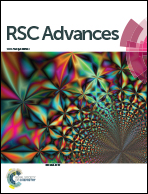Succession of the microbial community during the process of mechanical and biological pretreatment coupled with a bio-filter for removal of VOCs derived from domestic waste: a field study
Abstract
Changes in the microbial community can not only reflect the efficiency of waste disposal, but also reveal the effect of odor control during the treatment process. This study aimed to evaluate the removal efficiency of volatile organic compounds (VOCs) by the process of mechanical and biological pretreatment (MBP) coupled with a bio-filter (BF). An interesting phenomenon was found that the VOCs were effectively reduced through the MBP process. To understand the removal mechanism of VOCs, the abundance and diversity of microbial bacteria and fungi in the biological dehydration (BD) process, biological fermentation process, and BF process were explored. The abundance and diversity of microbes in the BF were relatively high, of which the bacteria such as Lactobacillus, Bacillus and Candida were the dominant species for VOCs treatment. The proposed technical process and the positive effects observed in this study indicate that it could be applied to the control of VOCs in the treatment of domestic waste.



 Please wait while we load your content...
Please wait while we load your content...